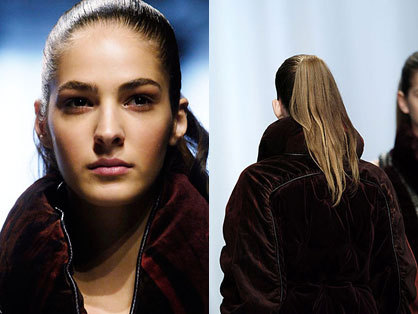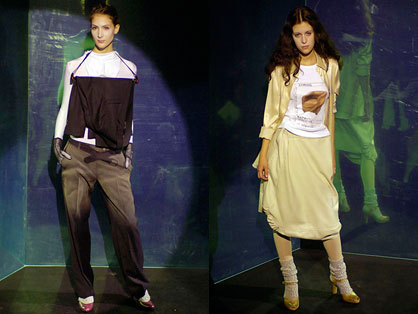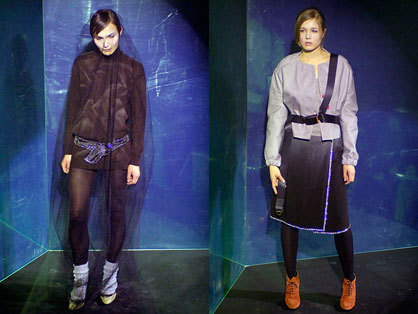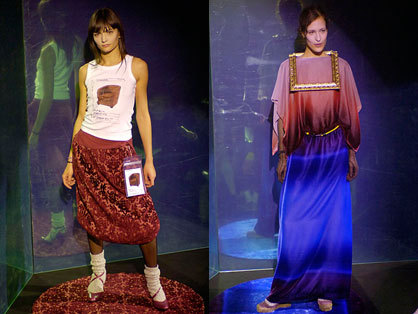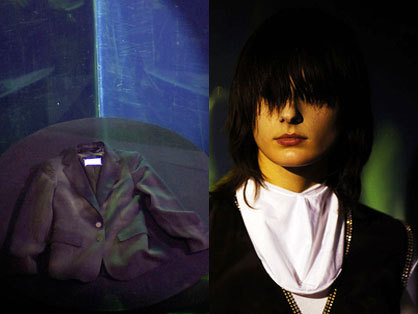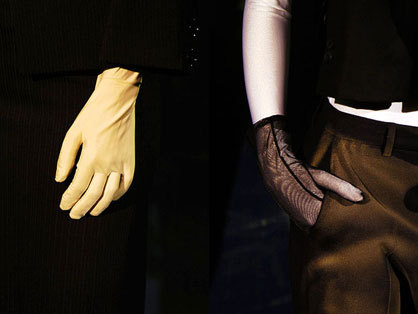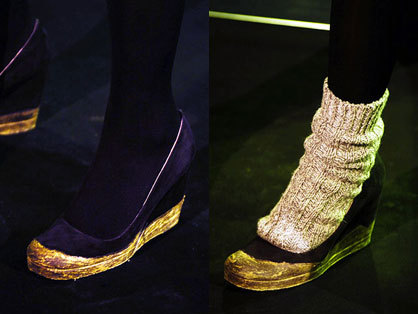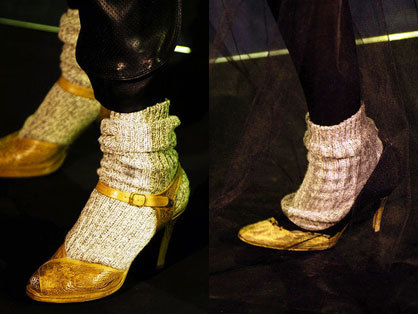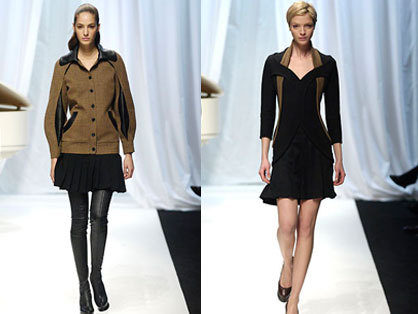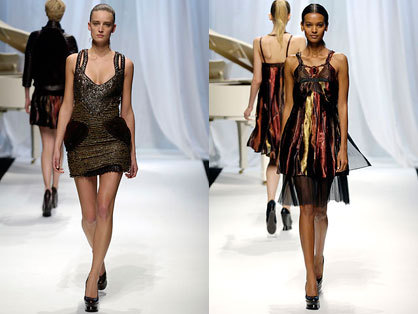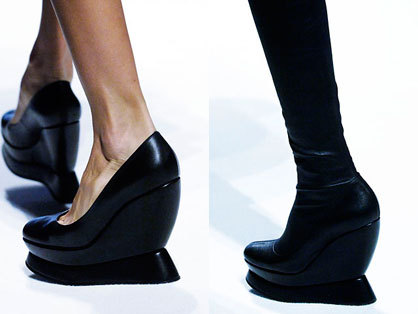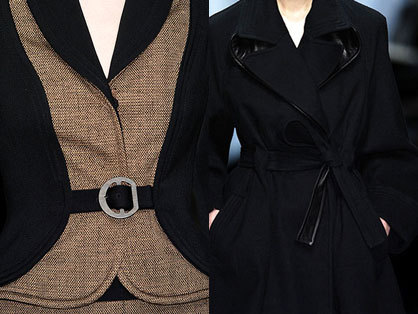Catwalk Furniture
Texto por NoéMie Schwaller
Zürich, Suiza
13.08.08
It's astonishing that two major designers implement the same idea in the same season. With both Martin Margiela and Hussein Chalayan, furniture was the dominant theme of the autumn / winter 2006 collection.
It's astonishing that two major designers implement the same idea in the same season. With both Martin Margiela and Hussein Chalayan, furniture was the dominant theme of the autumn / winter 2006 collection. However, apart from the occasional sofa reference there was no similarity between the clothes themselves.
Hussein Chalayan's Couch-Coat, Photos by Don Ashby
Whereas in Margiela's case it was a spontaneous idea inspired by his surroundings: «Aha! how can all this be turned into clothing?», Chalayan's inspiration was based on the relationship between movement and static elements within the home.
Martin Margiela's place in fashion history is aptly described in a review of the book 'Maison Martin Margiela': «His collections are known for their mix of innovation and wearability, for the ingenious ways in which he can redefine the elements of an essential item of clothing.»
In 1988, after two years spent with Jean Paul Gaultier, he showed the first collection under his own label. Regarded by many as part of the design avant-garde, Margiela is a master of deconstruction and reconstruction when it comes to clothing
Margiela goes beyond the conventional idea of clothing and material, reminding us of the jackets made of old socks and an evening gown.
However, his aim is to create something new and not just recycling the old. As a result he has presented us with the most intelligent and attractive fashion statements of recent years by far.
In 2006 Margiela transformed car seat covers made of wooden beads, flock wallpaper, quilted Chesterfield sofas into clothing. Carpets, curtains, telephones, Seventies' leather armchairs and car seats complete with safety belt now serve as jackets, trousers and high heels, with just enough of the original material remaining to ensure that their origins are visible.
The conceptualist and philosopher Hussein Chalayan says of his show that it's a trip round the world. «At the beginning it's as if you go outside. Then, as you travel on you see the world and finally arrive somewhere that's like home, with surroundings like a living room.»
Chalayan plays with the way we look at specific things, and in this way he succeeds in giving his clothes the impression that they identify with the space around them. Home country, identity and history are the themes which occupy him.
He had previously converted fighter plane seats, carpets and wooden sideboards into clothing, but this time as if by magic he transformed this comfortable furniture into special clothing which can be worn without great effort.
And it was definitely no coincidence that the extra large collars which were presented first were a perfect match for the seasonal fashion for exaggerated, enclosed necklines.
The wedge shoes whose soles were reminiscent of the plastic buffers of an office table are still very much in fashion today, and are copied in all variations by designers large and small.
Many special printing techniques and appliqués were used in the collection. With multiple layering and numerous different textiles in each dress the designer reveals the inspiration he received from working with wood. Chalayan continues to make an impression with his astonishingly anti-commercial design.
With decorative domestic furniture as a stage no woman needs to worry about being overlooked in these clothes – how could she, especially in a jacket whose rolled, padded leather collar seems to have been transplanted directly from grandad's armchair to her shoulders?
